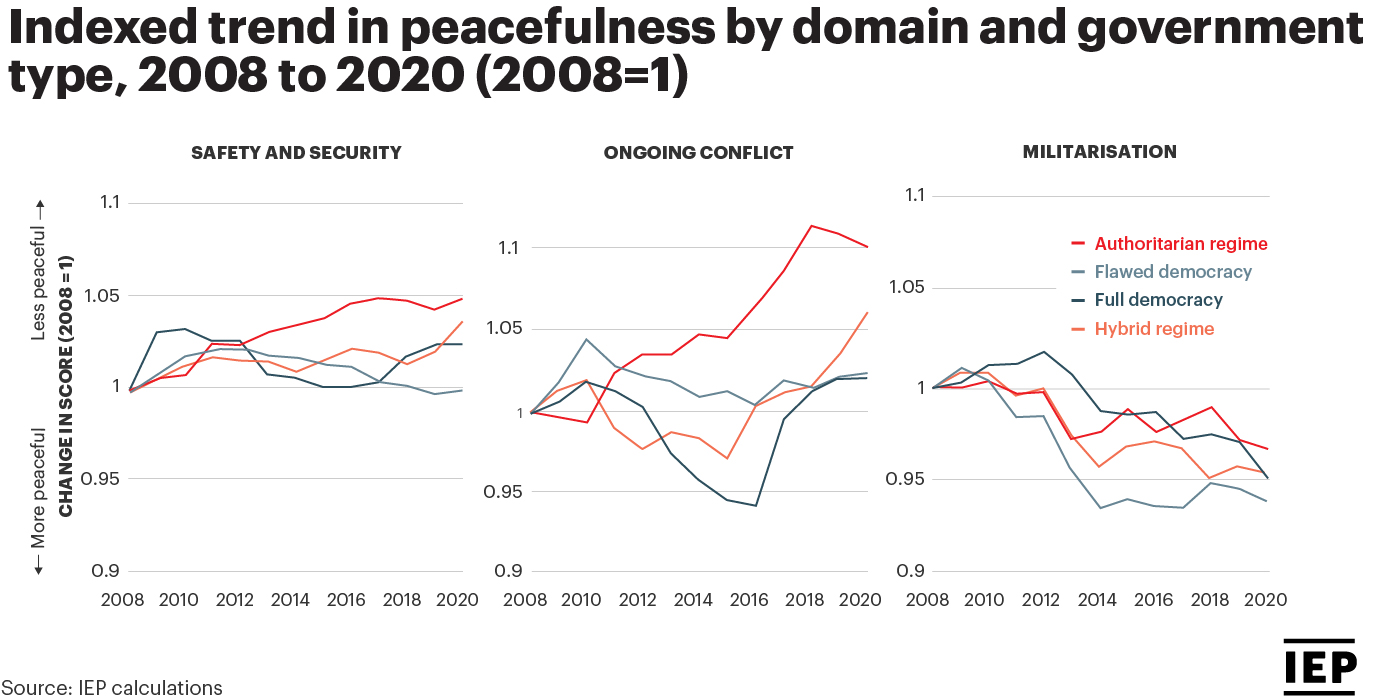Reporting from IEP shows that the vast majority of the increase in active armed conflict over the past decade has taken place under an authoritarian regime.
The Global Peace Index (GPI) measures peacefulness across three domains: Safety and Security, Ongoing Conflict and Militarisation.
The score change for the three GPI domains changes from year to year. This chart shows the indexed trend for each of the three domains across the four government types identified by the Economist Intelligence Unit’s Democracy Index.

The greatest difference between government types occurs in the Ongoing Conflict domain.
The vast majority of the increase in active armed conflict over the past decade has taken place under an authoritarian regime, located for the most part in the Middle East and North Africa region and sub-Saharan Africa.
Trends across the other two domains are more stable, with all four government types having deteriorated on the Safety and Security domain, albeit only marginally for flawed democracies, while all four government types improved on the Militarisation domain.
On a global scale, the average country score on the Militarisation domain improved by 4.4%, driven largely by reductions in military spending as a percentage of GDP and the size of the armed forces in many countries.
The Safety and Security domain deteriorated by 3.3 per cent and the Ongoing Conflict domain also deteriorated, falling by 6.8 per cent, as shown in Figure 2.4.